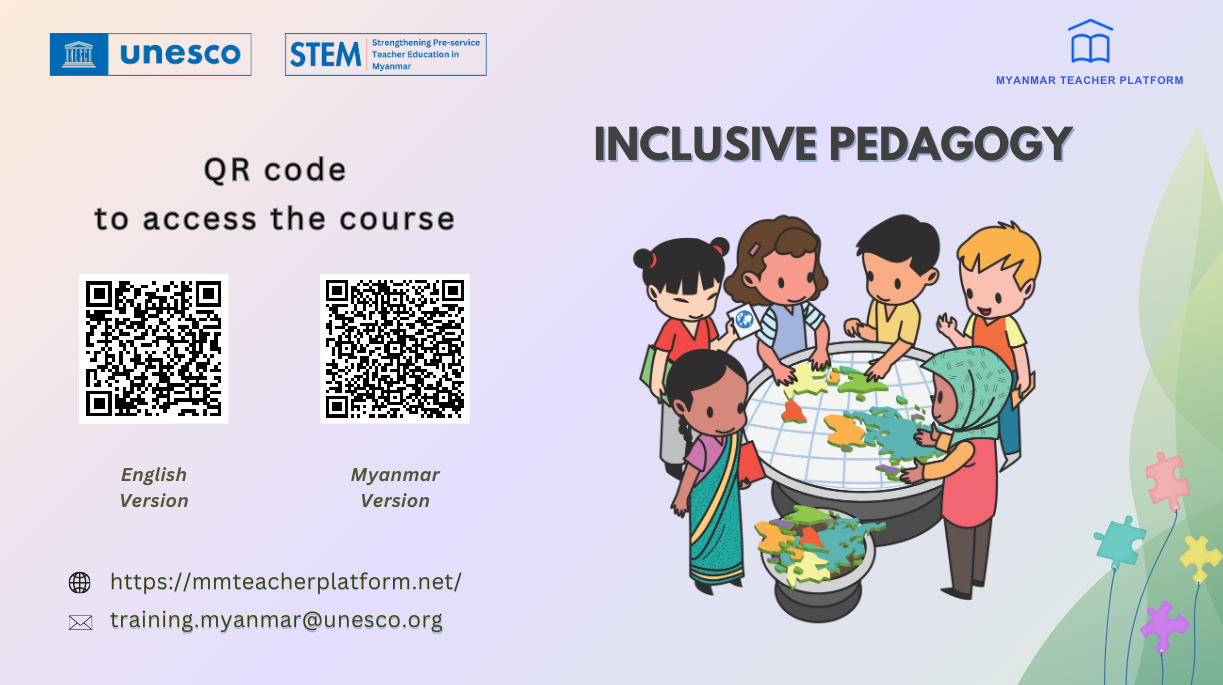Inclusive Pedagogy
4.7
(19 Reviews)
Certified
30 hour(s)
234 Enrollment(s)
3843 View(s)

Share On :
Course Description
This course, Inclusive Pedagogy, is designed for educators to engage in interactive learning to be able to apply their competencies gained and the tools to create safe and inclusive learning spaces, pedagogical theory and content knowledge. The course covers the following modules:
1.1. Learner-centred and Competency-based Approach to Teaching
1.1.1. Learner-centred classrooms
1.1.2. Effective learning
1.1.3. Competency-based education and 21st century skills
1.2. Pedagogical Content Knowledge and Teaching Strategies
1.2.1. Pedagogical theory and practice
1.2.2. Learning models and teaching strategy
1.2.3. Strategies for effective learning
1.3. Inclusive Pedagogies and Classroom Practices
1.3.1. Stimulating and supportive learning environments
1.3.2. Inclusive education
1.3.3. Differentiation
1.4. Conflict Sensitive Education
1.4.1. Safe and secure learning environments
1.4.2. Education for peace
1.4.3. Culturally responsive pedagogy
Course Objectives
This course prepares learners to understand and practice the principles, approaches, and strategies of inclusive pedagogy.
Learning Outcomes
- Identify linkages between education and teaching;
- Relate learning principles to effective learning;
- Identify linkages between competency-based education and 21st century skills;
- Compare the advantages and disadvantages of teacher-centred and learner-centred approaches;
- Relate learning progressions, spiralling, and mental models to a learner-centred and competency-based approach to teaching;
- Relate pedagogical theory and practice to active and passive learning;
- Identify the relationship between learning objectives, activities, and assessment;
- Relate learning objectives to Bloom’s Taxonomy;
- Relate basic learning models to local contexts;
- Identify how the teacher can communicate clearly and accurately to students;
- Examine the importance of the teacher listening to students;
- Describe techniques for engaging students in effective learning;
- Identify characteristics of stimulating and supportive learning environments;
- Define inclusive education and identify examples;
- Outline the key principles of differentiation;
- Define special education and identify examples;
- Define inclusion, integration, segregation, and exclusion;
- Identify barriers to learning;
- Identify elements of what makes a safe and secure learning environment;
- Relate well-being and wellness to school;
- Identify elements of peace education;
- Explore frameworks of conflict resolution; and
- Define characteristics of culturally responsive pedagogy.
Please login to take this course
Related Courses
